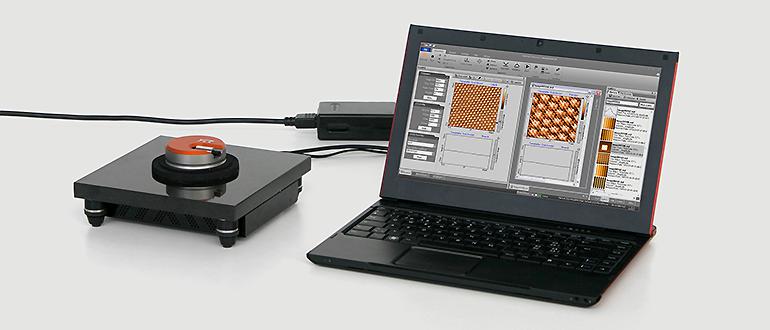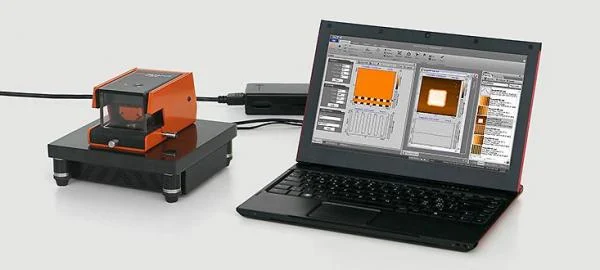NaioSTM

NaioSTM Compact
Distributor & Service Provider In India
Inkarp Instruments, a trusted Nanosurf partner, introduces the NaioSTM Compact in India, a cutting-edge Scanning Tunneling Microscope (STM) ideal for research and industrial applications.
The all-in-one STM microscope for easy entry into the world of atoms
- Small mechanical loop provides excellent stability
- Atomic resolution in 5 minutes
- Tiny footprint, easy to store and transport
The first scanning tunneling microscope (STM) was developed in 1981 by Gerd Binnig and Heinrich Rohrer at the IBM Research Laboratory in Rüschlikon, Switzerland, for the first time making individual atoms directly visible to a small group of specialists. They were awarded the Nobel Prize in physics in 1986. In 1997, Nanosurf went one step further and brought single atoms to the classroom!
The NaioSTM is a scanning tunneling microscope that brings together scan head and controller in a single instrument for even simpler installation, maximized ease of use, and straightforward transportability. The setup is robust against vibrations and can be used to achieve atomic resolution on HOPG in standard classroom situations. With its 204 × 204 mm footprint it hardly takes up any workbench space.
| NaioSTM Specifications | |
|---|---|
| Max. scan range (XYZ)(1) | 500 nm x 500 nm x 200 nm |
| Scan resolution (XYZ) (2) | 7.6 pm × 7.6 pm × 3.1 pm |
| Current amplifier | 0.1–100 nA in 25 pA steps |
| Sample approach | Stick-slip motor |
| Sample size | Max. 10 mm diameter, Max. 3 mm thickness |
| Data points | Imaging: up to 2048×2048, Spectroscopy: up to 65535 |
| Imaging speed | Up to 10 Hz |
| Computer requirements | USB 2.0, Windows 7 or higher (32- or 64-bit)/td> |
| Power supply | 90–240 V AC, 50/60 Hz, 30 W |
| Size (WDH), Weight | 204 × 204 × 104 mm, 3.45 kg |
| (1) Typical values. (2) Calculated by dividing the maximum range by 16 bits. |
|


